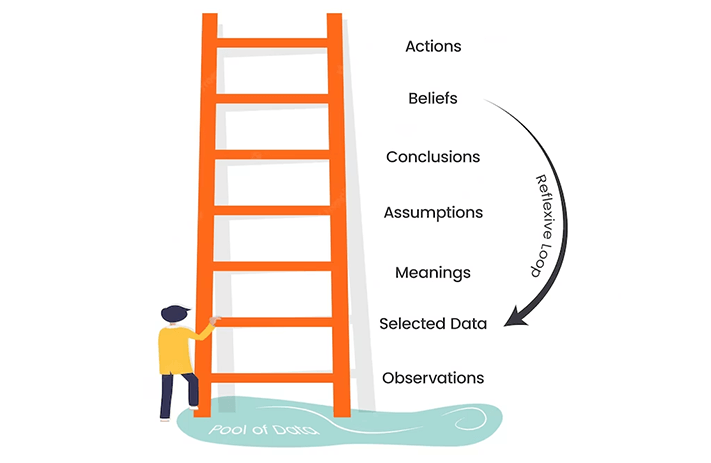
Click the button to start reading
10 Excellent Monitoring Tools for Shellacking Your Competition
Do you ever toss and turn over two similar products in angst over which to buy? As a business owner, your role is to understand this angst, and craft a pitch that sways your customer to push the “buy” button on your webpage. Because if you’re not on your toes, they’ll go with the competition.
But how do you craft a successful pitch? How to have the right product in the first place?
Some people say that success is all about who you know. But it’s just as true to say that it’s about what you know. And more particularly, it’s about what you know about your competition.
Turning a blind eye to the competitors is one of the biggest mistakes a business owner makes. Because the truth is, they’re an invaluable resource. Monitoring competition reveals marketing strategies, unlocks opportunities and even averts disasters. It’s key to increasing ROI.
In order to reap all of these benefits, tracking competition needs to be coupled with strategy. It requires a thorough competitor analysis.
In this post, we’ll discuss how to observe and learn from your competition, and reveal some of the best monitoring tools for tracking your biggest competitors.

Competitors: Just Who Are They?
While this question may sound like a no-brainer, the internet has shaken up traditional notions around competition. Before diving in, let’s identify two distinct types of competitors, and evaluate how to approach each.
Business Competitors
A business competitor is someone who sells an identical or similar product and competes to attract the same customer as you.
Business competition can be either direct or indirect. Direct competitors offer identical products to the same customer base. Two coffee shops on a town’s Main Street, for example, are direct competitors. Indirect competitors offer similar products to a similar customer base. A burrito joint and a deli on this same Main Street are examples of indirect competitors. Fundamentally, business competitors, whether direct or indirect, compete for sales.
Search Competitors
The internet has introduced another category of competition, search competitors. Search competitors compete for rankings in search engines.
In a market where your online visibility either makes or breaks you, search competition is every bit as relevant as business competition. Search competitors vie for top rankings with the same keywords, even though their product or business plan may be completely different.
Take a YouTube channel that reviews SaaS platforms. This channel competes for the same keywords as each of the platforms it reviews. However, its product and revenue stream is completely different from any of the SaaS companies.
As both business and search competitors impact your bottom line, it’s necessary to keep a watchful eye on both. But the things to look for are different. With a business competitor, you’re concerned about their price, marketing plan and product. With a search competitor, you want to understand their SEO strategy.
With this clarification under our belt, let’s now consider the benefits of monitoring and analyzing competition.

5 Benefits of Competition Analysis
Peeking over the fence at your competition isn’t just a fun thing to do on a lazy weekday afternoon. In a very real way, it impacts your business strategy and bottom line. Let’s cover some of the key benefits it provides.
1. Establishes a Baseline
Every business needs a firm grasp on the industry, particularly when it’s just starting out.
Studying the competition provides answers to fundamental questions. It clarifies how much annual revenue you stand to earn and where the biggest opportunities are in the market. It identifies who your customers are, and some of the biggest challenges you’ll face in your business.
This baseline information serves as the framework for any business plan and strategy plan.
2. Reveals Opportunities
Opportunities are the ticket to success. Seizing on them lands top-tier clients and establishes yourself in the market.
These opportunities can reveal themselves through a careful study of the competition. When you understand your competitor’s positions in the market, and the strengths and weaknesses of each, it indicates places where you might fill in the gaps.
Consider the business of wedding reception venues. Perhaps one business offers a superb venue, but the location is out-of-the-way. While another has a great location, but the service is lousy. The opportunity, then, could be to offer a venue in a convenient location with superb service.
3. Identifies Your Competitive Advantage
Your competitive advantage sets you apart from the rest. It’s the magnet that draws customers to you over the competition.
Identifying your competitive advantage requires a careful study of your competition, then an evaluation of how you measure up. Maybe you beat them in prices, or in location. Perhaps the quality of your product or your level of expertise is a cut above the rest. Sometimes a business has distribution advantages, better infrastructure, or a talent pool that others don’t have.
Your competitive advantage serves as the basis for your marketing plan. It’s the feature that you pitch to the customers which allows them to distinguish you from the pack of your competitors.
4. Provides Fodder for Great Marketing
Sometimes monitoring is about being a copycat. Or more accurately, it means looking at what the competition is doing right, and then improving on it.
What’s come to be known as the 10X Content Strategy outlines one way to approach this. This strategy was outlined by Rand Fishkin in 2015. It focuses on search competitors.
The method, simply put, is to first identify the most important keywords for your business. The next step is to study the content that currently ranks #1 in the search engine for these keywords. The final step is to improve this content by a factor of ten.
In order to create “10X-ed” content, first consider what is lacking in the competitor’s content. Then, improve on it both visually and verbally. Essentially, knock it out of the park. Create content that is so head and shoulders above the competition that they won’t be able to catch up.
5. Signals Threats
Every industry has its own special set of vulnerabilities. Some are particularly impacted by weather patterns, while others are impacted by licenses and regulations. Knowing the history of your competition and the challenges they have faced indicates the challenges you may face as well. Maybe a competitor has been burdened by fees, taxes and regulations. Or its sales have declined due to changes with technology.
Understanding possible threats allows you to put plans in place to either mitigate, transfer or avoid them.
As you can see, a wealth of knowledge and strategy is to be gained from monitoring and analyzing competitors. But it does require the right approach. (It isn’t just about imitation; sometimes that can be the worst approach, in fact!) Let’s look into strategy next.

6 Strategies for Effective Competitor Analysis
The objective with competitor analysis is to become untouchable in a sense, and to develop a product or marketing plan that the others cannot imitate or replicate. Let’s look at how a competitor analysis can set you above the rest.
1. Start With a Hypothesis
Studying the competition isn’t an open-ended exploration that descends down never-ending rabbit holes. It’s more effective when it’s focused. One way is to conduct research as though it were a science experiment, starting with a hypothesis then investigating to see if it is affirmed.
Maybe you’re opening your own restaurant, and posit that you’ll differentiate yourself with a menu that sources its food from local farmers. However, upon analyzing the competition, you discover that many restaurants already use this approach.
This indicates a need to pivot. Maybe instead, you’ll differentiate yourself as a family-friendly restaurant, or a restaurant with a large selection of craft beer.
2. Consider the Stage of Your Organization
The information to look for when evaluating competition depends on the state of your organization. If a business is starting out in an established market, the pressing questions are things like: how does the competition differentiate itself, what are its prices, and where do customers find out about them?
An established business, however, probably has most of these basics down. Maybe it’s looking to scale, and so is more concerned with things like infrastructure, capacity management and operations. And so it would study the competitor’s operations, with the aim to develop a plan to grow and expand.
3. Use Heuristics, But Moderately
While it’s possible to learn a lot about the competition, you cannot know all the ingredients in their secret sauce. They may have a compelling marketing campaign, yet you have no idea how effective it is. Or they have a new product that seems all the rage, but it’s unclear how much revenue it’s actually generating.
Even when you don’t understand all the ins-and-outs of the competition, this is no reason to ignore them. It’s ok to act on instinct and heuristics, even if there isn’t data to support everything. However, monitoring competition cannot be driven exclusively by gut feelings. At some point, it needs to incorporate data into the mix as well.
4. Incorporate With Other Research
Focusing exclusively on competition creates blind spots. For example, maybe your chief competitor is investing heavily to improve the user experience of its website. In order to keep up to speed, your first inclination might be to make a similar investment.
However, after you research your customers, you may realize that they’re satisfied overall with the UX of your website. However, they would most like to see a more diverse selection of products.
Quality competitor analysis, that is to say, isn’t performed in isolation. Rather, it is melded with other market research. It’s equally important to understand the customers, the market, and the operations of the business and to develop a strategy that combines all of this knowledge.
5. Repeat Periodically
Customer analysis isn’t a one-and-done approach. New competitors are always entering the market, shifts are always taking place, and having your finger on the pulse means continually keeping tabs on everything that’s going on.
A quarterly approach is a good time frame for performing a routine customer analysis. It’s frequent enough that it identifies big changes right away, and it also provides a sufficient time frame for making appropriate shifts.
6. Shift With Prudence
Vigilantly looking over the fence at the competition may well trigger a constant desire to change things up. The grass is always greener, and when someone else has a shiny new product or marketing plan, it’s tempting to get on board as well.
However, change is costly. It may take up to two quarters to reap the benefits of a big change. A business that pivots, turns and twists constantly is sure to lag way behind one who chugs along at a steady pace. And so while the competition may signal a need to pivot and change, it needs to be approached with caution.
As you can see, monitoring the competition isn’t just about gathering data. Mining the data also requires strategy. Tools connect you to meaningful information and accelerate the research. Let’s now turn our attention to some of the best tools on the market.

10 Tools to Monitor Employees
Scores of excellent tools are ready and waiting to help you reap all the benefits of competitor monitoring. These tools cut out guesswork. They allow you to uncover just who your competition markets to, and how they’re reaching these people. These tools direct you to what you need to be doing in your business, what you need to avoid, and much more.
1. Ahrefs
Ahrefs is one of the most popular tools for getting your website in front of the eyes of your target market. It allows you to peek behind the curtain of your search competitors and glean some insight from their successes and failures.
With its keyword tool, you can quickly identify your largest search competitors. Its gap tool identifies those keywords that your competition has capitalized, but that you’re missing out on. It even allows you to hone in on sections of your website to analyze its keyword ranking with competition.
2. Semrush
This is the place to get a leg up on your search competitors.
Semrush identifies your competitors right away based on your keywords, then provides stats for all of these webpages. It reveals their best backlinks for generating traffic, signaling which backlinks to include on your own site. Plus, it provides clues for new content by listing all the popular search keywords for your competitor’s sites.
Semrush also sorts and ranks your business competitors according to leaders, niche or established businesses. This highlights which competitors to look out for and further research.
3. Answer the Public
Answer the Public is a tool that “listens” to the public and whatever is abuzz on the internet in the present moment. This current feedback allows you to act on new information as it’s happening.
This tool lets you tap into the minds of your customers and hear what they’re saying about the competition and the product you both provide. For example, if the internet is all abuzz about your competitor’s new ad campaign, it’s a clear signal to investigate further. Or maybe a current trend indicates a shift in the market demand, and having your finger on the pulse lets you identify it before the competition.
4. Competitors App
Ultimately, you want to beat your competition to the punch, but sometimes it’s ok if you just linger with your competition around the punch bowl to glean information.
Competitors App keeps you abreast of everything your competition is doing to market itself online. From blogs, to newsletters, to social media campaigns, it gathers the information and puts it right in front of you. It even notifies you of changes to their website.
All this insight on your competition’s marketing strategy makes it easy to land a powerful counterpunch.
5. BuzzSumo
BuzzSumo makes it easy to create a top-notch content marketing plan, by understanding what your competition is doing right and where it’s falling behind.
Whether they’re on Facebook, Twitter, Reddit or YouTube, it alerts you to what your competitors are writing about, and how it’s received by customers. This insight directs you to trending topics for blog posts and other content marketing.
6. Milled
Milled is a search engine for newsletters that catalogs nearly 100,000 brands and retailers. Periodically tapping into this resource reveals your competition’s current pitches and upcoming products. It’s also a place to follow indirect competitors and gather insight from their strategies.
Its search features allows you to narrow the competition by keyword, brand, and even by region.
One limitation of Milled, however, is that it only catalogs businesses in the apparel, beauty, home decor and jewelry industries.
7. Facebook Ad Library
The great thing about Facebook ads is that they allow you to hone in on your customer, customizing the ad right down to things like income level, lifestyle and location.
And Facebook Ad Library allows you to peek behind the current of your competitors to understand who they are targeting, and how. It contains seven years of data, which records the details of who made the ad, when it ran, and what it looks like. It’s a trove of information, ready to be mined.
While you cannot know how effective the ad was, Facebook Ad Library provides plenty of ideas for how to craft an advertisement and pitch to your customers.
8. Similarweb
Similarweb gives you signals for where to grow your online presence, how to strategize a social media campaign, what keywords to pay for. It can even indicate what paid channels are worth investing in.
With just a few clicks, Similarweb reveals a wealth of stats on your competition. It notifies you of their paid ads, traffic sources, referral pages and social media referrals. All of this data provides clues for things to either imitate or avoid. The data on the competition’s social media traffic indicates which of their platforms generate the most customers. Their paid ads indicate highly competitive keywords to avoid vying for. Knowing the services they pay for may offer a tip in which services are worth investing in.
One drawback to Similarweb is that it doesn’t pick up data on sites with fewer than 5,000 visitors a month.
9. The Competition’s LinkedIn Page
A perusal of your competitor’s LinkedIn page reveals a lot about its capacity. It indicates the limitations and strengths of its workforce, and even its marketing strategy. For example, a company with a team of copywriters indicates their marketing plan centers around creating content. However, a team skilled in SEO reveals that the strategy is more about targeted ads.
This insight isn’t necessarily an indication to imitate their plan. It may in fact reveal gaps to capitalize on.
10. Google Keyword Planner
Compiling a list of current and up-and-coming competitors is an ongoing process. And Google Keyword Planner is a tool for keeping this list comprehensive and current. When it’s set up for product and brand mentions, this tool alerts you to any trending topics in your chosen market.
And this summarizes some of the best tools for competitor marketing. Each tool has its own distinct strength, and with the right assortment you’ll be well on your way to successfully monitoring and tracking the competition.
Conclusion
Monitoring the competition is part and parcel to any market plan and business strategy. It helps a company identify its competitive edge and signals emerging trends and opportunities. Its insights can directly impact a company’s ROI.
In this age where the internet rules the roost, every business needs to monitor both its business and search competitors.
This tracking isn’t necessarily about imitating the competition. It may indicate gaps that need to be filled. A good competition analysis combines competitor research with market and customer research.
Monitoring tools are key to successful competition analysis. What is your favorite monitoring tool?
















